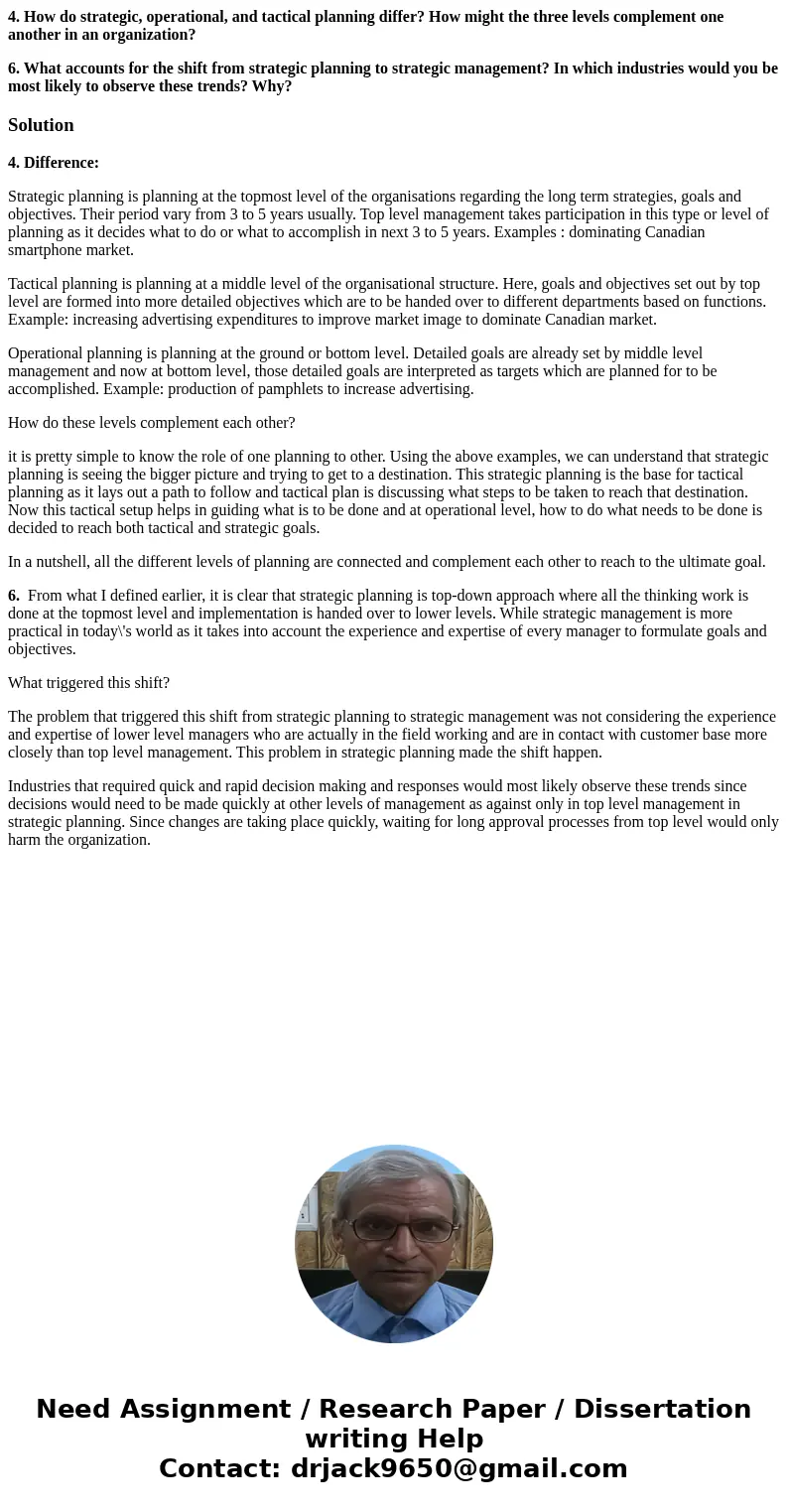4 How do strategic operational and tactical planning differ
4. How do strategic, operational, and tactical planning differ? How might the three levels complement one another in an organization?
6. What accounts for the shift from strategic planning to strategic management? In which industries would you be most likely to observe these trends? Why?
Solution
4. Difference:
Strategic planning is planning at the topmost level of the organisations regarding the long term strategies, goals and objectives. Their period vary from 3 to 5 years usually. Top level management takes participation in this type or level of planning as it decides what to do or what to accomplish in next 3 to 5 years. Examples : dominating Canadian smartphone market.
Tactical planning is planning at a middle level of the organisational structure. Here, goals and objectives set out by top level are formed into more detailed objectives which are to be handed over to different departments based on functions. Example: increasing advertising expenditures to improve market image to dominate Canadian market.
Operational planning is planning at the ground or bottom level. Detailed goals are already set by middle level management and now at bottom level, those detailed goals are interpreted as targets which are planned for to be accomplished. Example: production of pamphlets to increase advertising.
How do these levels complement each other?
it is pretty simple to know the role of one planning to other. Using the above examples, we can understand that strategic planning is seeing the bigger picture and trying to get to a destination. This strategic planning is the base for tactical planning as it lays out a path to follow and tactical plan is discussing what steps to be taken to reach that destination. Now this tactical setup helps in guiding what is to be done and at operational level, how to do what needs to be done is decided to reach both tactical and strategic goals.
In a nutshell, all the different levels of planning are connected and complement each other to reach to the ultimate goal.
6. From what I defined earlier, it is clear that strategic planning is top-down approach where all the thinking work is done at the topmost level and implementation is handed over to lower levels. While strategic management is more practical in today\'s world as it takes into account the experience and expertise of every manager to formulate goals and objectives.
What triggered this shift?
The problem that triggered this shift from strategic planning to strategic management was not considering the experience and expertise of lower level managers who are actually in the field working and are in contact with customer base more closely than top level management. This problem in strategic planning made the shift happen.
Industries that required quick and rapid decision making and responses would most likely observe these trends since decisions would need to be made quickly at other levels of management as against only in top level management in strategic planning. Since changes are taking place quickly, waiting for long approval processes from top level would only harm the organization.

 Homework Sourse
Homework Sourse